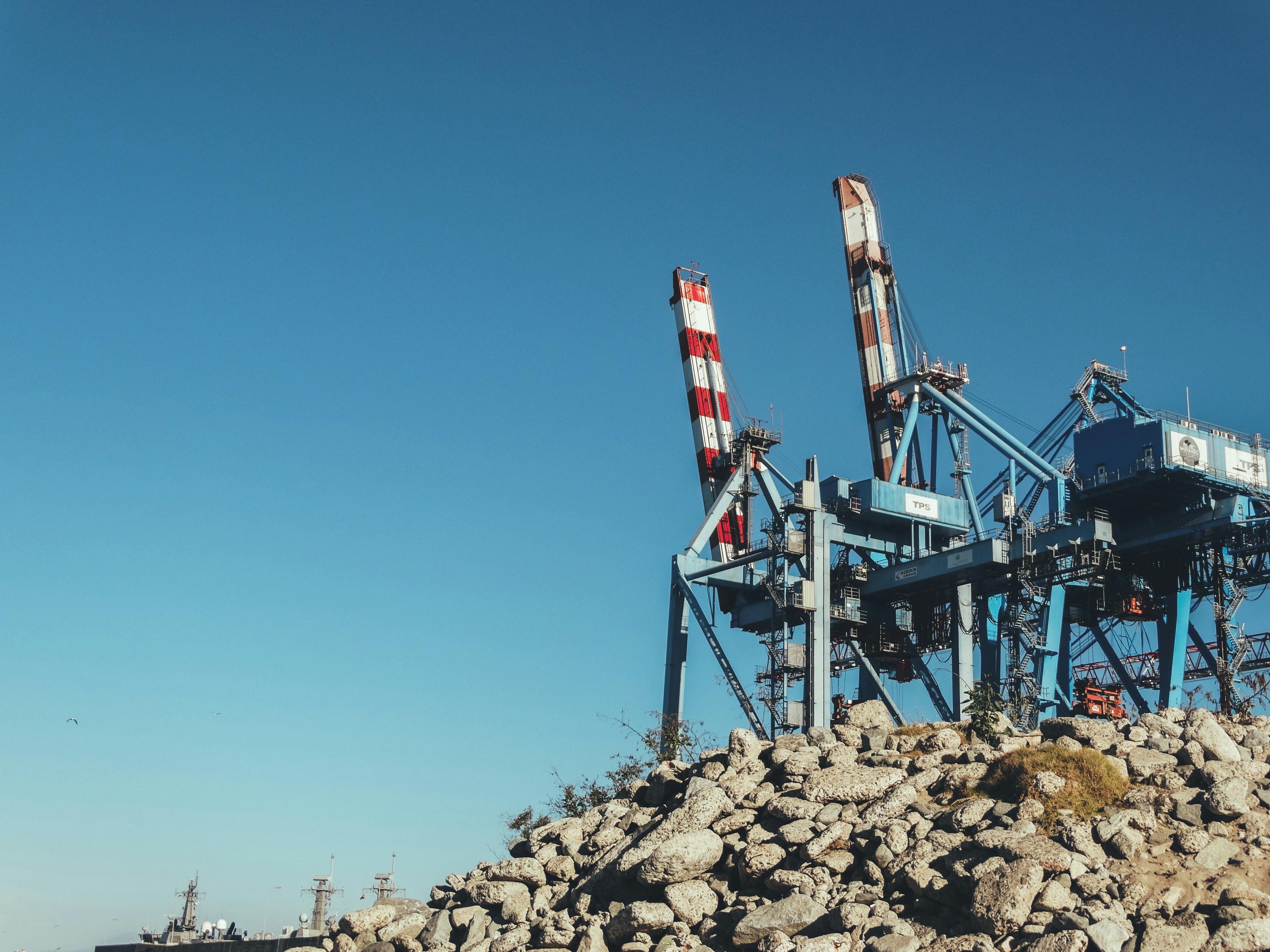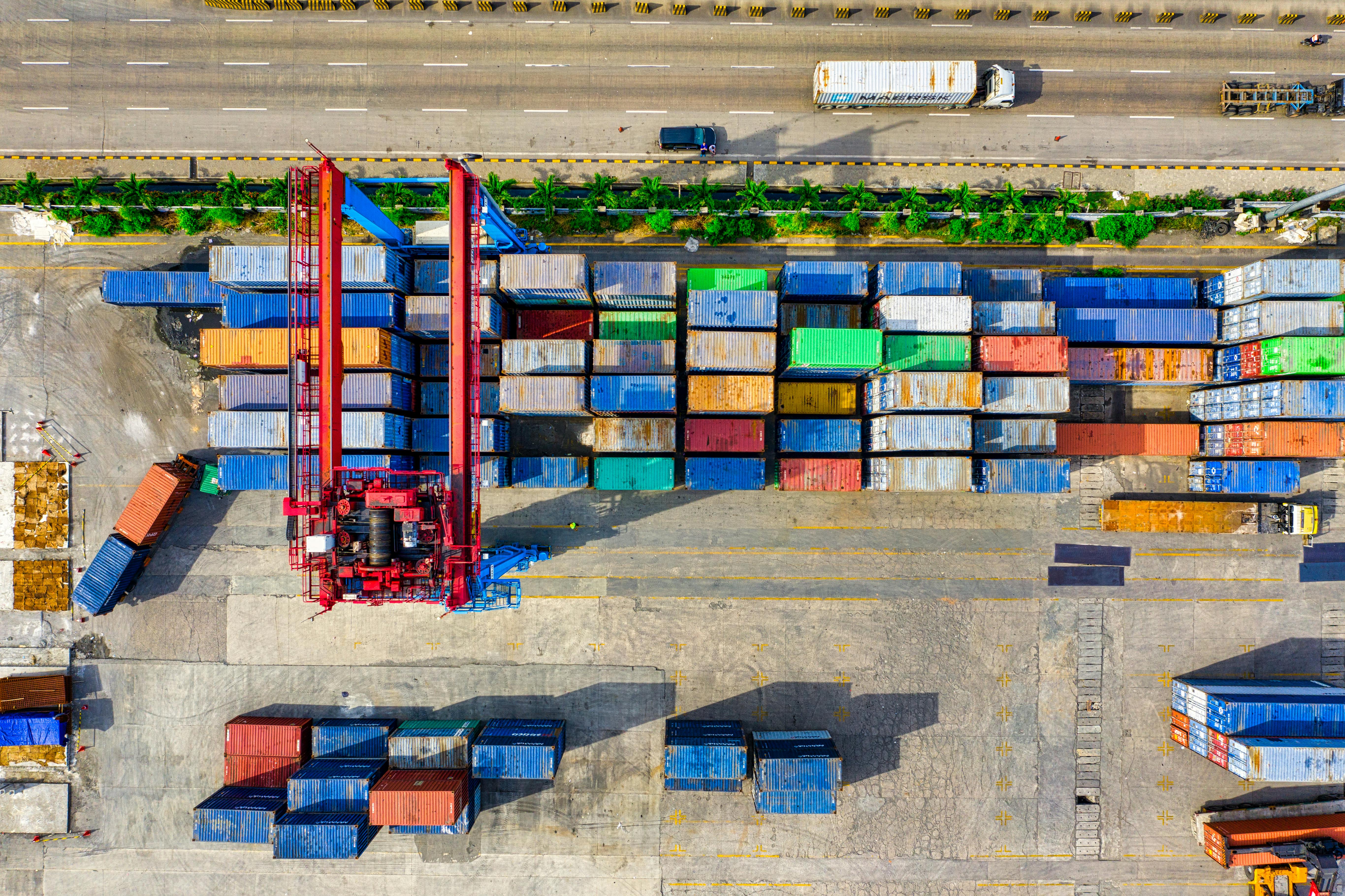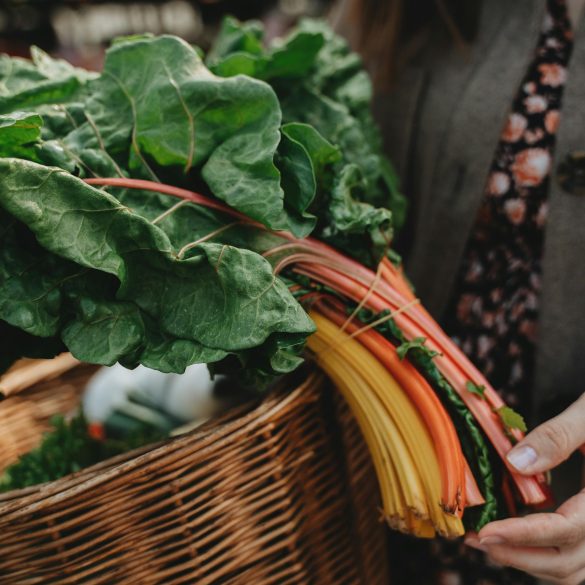How Blockchain-Powered Traceability Transforms Chilean Food Exports
Funny thing is, not so long ago, most Chilean food exporters (especially in fresh fruit and seafood) saw technological buzzwords like “blockchain” as something that belonged firmly in the tech headlines—not the granitic, gritty reality of weekly shipments, rapidly shifting compliance docs, and demanding overseas clients10. I’ve spent the last seven years fielding late-night calls from export managers stuck at the intersection of food safety demands, sudden EU regulation pivots, and “I need this lab result tracked, yesterday!”—and I’ll be completely honest: the blockchain hype felt almost laughable at first. But the landscape’s changed. Fast.
For Chile, a nation whose very economic lifeblood pulses with grape, salmon, and blueberry containers bound for distant ports, trustworthy digital traceability isn’t some Silicon Valley pipe dream—it’s a matter of remaining competitive, compliant, and credible on the world stage. As of 2025, more than 65% of major food buyers in Europe, America, and Asia report demanding verifiable, tamper-resistant origin and quality chains before issuing purchase orders for South American produce4. More striking—three years ago, this was probably under 20%. That evolution? It’s nothing short of seismic for every Chilean grower, packer, and exporter with global ambition.
So, what does blockchain actually do for food traceability, especially for Chilean exporters? Why do importing countries care? What are the real failures, frustrations, and breakthroughs I’ve seen up close—both in a conference room in Santiago and in a freezing packhouse in Coquimbo at three in the morning?
What Is Blockchain Traceability for Food?
Here’s where it gets technical—so bear with me, I’ll keep it plain. Blockchain-powered traceability, in the context of food exports, refers to the use of decentralized, tamper-proof digital ledgers to record every step, movement, and alteration of a food product from origin to final buyer1. Imagine a digital chain that nobody can edit—every harvest date, transport temperature, safety test, and customs declaration gets timestamped in sequence and is instantly visible to anyone with permission. This isn’t just some idealized theory either. In practical, boots-on-the-ground Chilean exports, it means you can instantly trace a single cherry back to the farm block, know its exact pesticide use, or confirm its cold storage chain for the specific shipment landing in Rotterdam or Shanghai.
Compared to the old days of Excel sheets, paper logbooks, or basic ERP trace files (which, of course, can and have been forged, “lost,” or delayed), blockchain offers radical transparency for everyone in the chain—the grower, compliance manager, freight forwarder, third-party certifier, and, ultimately, the importer sitting across the ocean. Let that sink in for a second.
Why Blockchain?
- Immutability: Once information is added, it’s locked for good2.
- Real-time access: Multiple parties (with permission) can see identical, real-time records—no time wasted on email chains or disputes over document versions.
- End-to-end verification: Certification agencies, customs, and end buyers can trust the data, reducing both fraud and unnecessary delays.
- Integration with IoT/automation: Advanced systems even auto-upload temperature or GPS data from smart sensors right into the blockchain15.
The result? Fewer disputes, less paperwork chaos, swifter port clearances, and—most crucially for Chile—less risk of getting blacklisted by major overseas food safety authorities for compliance gaps (and yes, that does happen—more often than most exporters want to admit).
Why Global Food Buyers Demand Transparent Supply Chains
Ever notice how global headlines about food recalls, contamination scandals, or forced labor claims now travel faster than a cargo plane—sometimes detonating financial landmines for food exporters halfway around the world? Let’s be honest, it’s no longer just about quality or taste; it’s about demonstrable, digital proof of origin, safety, labor, and sustainability. How does this hit Chile? Hard and directly, especially in high-stakes commodity corners like fresh fruit, salmon, and processed foods.
How Chilean Exporters Implement Blockchain: Step-by-Step
Okay, let me get hands-on for a minute. There’s a perception—and I definitely bought into it, early on—that blockchain integration is an “all-or-nothing” kind of beast. Actually, most exporters (and producers!) phase in digital traceability gradually, driven by both regulation and market pressure. Here’s how it’s usually rolled out in the Chilean food sector, based on my own fieldwork and hundreds of hours with agri-exporters, IT teams, and compliance consultants:
- Map Your Traceability Gaps: The first (and arguably most important) step isn’t technology—it’s brutally honest self-audit. Where does traceability break down? Most Chilean exporters discover critical weaknesses at the points of third-party packing, mixed container handling, or off-site logistics. One personal story: a major blueberry operation in O’Higgins Region realized mid-harvest that half their transport refrigeration logs were missing digital documentation due to paper-based handoffs during the peak season crunch.
- Choose a Blockchain Platform Fit for Food, Not FinTech: Forget general-purpose platforms for a second. The real gold lies in solutions designed for perishables, compliance validation, and rapid documentation exchange. Salmon exporters I worked with found platforms like IBM Food Trust and Ambrosus easier to pilot than homegrown crypto-oriented blockchains6. The goal? Plug into something that can flexibly connect to lab test APIs, cold chain IoT, and global customs docs.
- Integrate Data from Origin, Not Just Packing: True blockchain traceability shines when it ties records from seed or smolt source through every intermediary stage. Here’s where most Chilean exporters wrestle with rural connectivity and staff training hurdles.
- Establish Permissioned Access and Training: Real talk: If your staff or partners “game the system” with duplicate or delayed entries, you’re sunk. Decentralized ledgers only work when every party is accountable, appropriately credentialed, and trained. Early adopter fisheries in Los Lagos saw the value of real-time app logins for on-site supervisors—but only after initial resistance and a fair few mistakes (I’ve watched the “how do I reset my password?” debate play out in more than one freezing warehouse at midnight).
- Test for Gaps with Pilots, Not Full Launches: Best practice? Limit early blockchain pilots to high-value, high-compliance shipments (think: cherries to China or salmon to Japan) where risk is highest. Gather feedback, spot blind spots, and refine—then scale up across more product lines.
Blockchain Implementation Timeline for Food Exports: A Realistic Table
| Phase | Typical Duration | Common Obstacles | Key Tools/Partners |
|---|---|---|---|
| Self-Audit & Scoping | 2-4 Weeks | Documentation chaos, unstructured staff feedback | Consultants, certification bodies |
| Platform Selection | 3-12 Weeks | Vendor over-promising, integration gaps | Food-focused blockchain providers |
| Initial Integration | 2-6 Months | Low digital literacy, legacy systems | IT teams, IoT integrators |
| Pilot Roll-out | 1-2 Export Seasons | Real-world “workarounds,” partner onboarding | Lead customers, local trade groups |
| Full Scale-up | Ongoing | New compliance rules, market shifts | Feedback cycles, compliance updates |
Success Stories and Common Pitfalls in Chile
Let me tell you about the time a mid-sized cherry exporter from Maule hit a bureaucratic brick wall in South Korea—their consignment was delayed due to lab test document inconsistencies, traced back to a broken Excel file chain. After switching to blockchain-based traceability (IBM Food Trust pilot, verified for compliance with Asian import standards), they saw a 45% drop in customs clearance time and virtually eliminated lost paperwork6. The catch? They stumbled for months on training, staff buy-in, and adapting old farm systems. I’m still learning the best tactics for wide adoption, frankly; it’s an ongoing process.
- Major fruit and seafood exporters report up to 60% lower paperwork delays at European and Asian entry points after blockchain adoption4.
- Grape exporters using blockchain-integrated sensors cut product loss from cold chain failures by one-third due to instant, tamper-proof alerts.
- Smaller avocado co-ops face cost, complexity, and bandwidth challenges—most still run hybrid paper/blockchain approaches while training up teams and partners.
- Common pitfall: Exporters neglecting to onboard all critical partners (customs agents, truckers, certifiers) end up with “gaps” that undermine entire digital chains.
- Best early ROI: High-value, high-risk shipments (cherries, premium salmon, organic blueberries) where blockchain-driven trust equals direct access to premium buyers and fewer rejected or held shipments.
Regulatory Requirements and Compliance Realities
Now, this is where things get tricky (and sometimes infuriating). Food export rules aren’t just tough—they’re a constantly shifting maze. EU Food Law updates in 2024, FDA’s FSMA rules for US-bound produce, plus stricter protocols from Asian markets, all demand data traceability “from field to port.” Blockchain aligns almost seamlessly here: providing time-stamped, immutable records that let regulators instantly verify compliance milestones.3 But on the ground? It’s rarely so smooth.
- Chile’s own SAG requirements for phytosanitary certification now increasingly “expect” digital traceability support for rapid export clearance.9
- The United States FDA’s ‘New Era of Smarter Food Safety’ blueprint—a mouthful, I know—explicitly promotes pilot blockchain solutions for imported produce post-202312.
- China, as of January 2025, has begun requiring food safety audits and digital traceability protocols aligning with ISO 22005—a technical headache if your system isn’t globally interoperable.
One more thing: Regulation isn’t just a stick. It’s pushing Chilean food exporters—large and small—toward investment in robust, future-proof traceability, often with government or industry grant support. By 2026, over 40% of eligible Chilean fruit and seafood exporters are projected to adopt blockchain-enabled traceability (up from under 15% in 2022)14.

Tools, Technologies, and Choosing a Blockchain Platform
This part always triggers debate—even among my most digitally savvy colleagues in the Chilean ag export space. Should you build in-house, buy off-the-shelf, or partner with a global platform? My own view has shifted (more than once, honestly): What really matters is interoperability and practical fit, not slick sales demos.
- IBM Food Trust: Widely adopted by larger Chilean fruit and seafood players. Integrates with SAP/ERP, cold chain IoT, and compliance APIs6.
- AgriOpenData Blockchain: Used for EU market compliance, especially with organic shipments. Easy, API-first, open-source ethos.
- TE-FOOD: Modular approach; strong on livestock and specialty aquaculture. Lower up-front cost, steeper learning curve.
- Ambrosus: Offers advanced IoT integration for live temperature and movement tracking, suitable for high-value perishables and alliances with sensor tech startups.
- Other options: Modum, Provenance, VeChain, even custom-built consortium blockchains—each with unique pros and cons, depending on buyer requirements and legacy system compatibility.
Side-by-Side Platform Comparison for Chilean Food Exports
| Platform | Key Features | Best For | Estimated Learning Curve |
|---|---|---|---|
| IBM Food Trust | ERP, API integration, strong compliance support | Large exporters, critical compliance | Medium |
| AgriOpenData | Open source, multi-language, flexible APIs | SMEs, organic / specialty | Low |
| TE-FOOD | End-to-end livestock, aquaculture traceability | Aquaculture, livestock exporters | Medium-High |
| Ambrosus | IoT integration, sensor data | Perishables, innovators | High |
How do you choose? Start by mapping your compliance pain points and buyer expectations, then pilot-test with a “must-ship” product line—expensive cherries to China, for example. What matters is not just tech spec, but human rollout: “If we can’t get the forklift operator to log harvest times quickly, the platform will gather dust.”
Practical Advice and Next Steps
Here’s what I’ve learned (sometimes the hard way): Blockchain-driven traceability in food exports is less about the shiny buzzwords and more about operational discipline, people-centric change, and relentless focus on buyer validation. Want a starting point? Try this:
- Talk to Your Top 3 Buyers: Ask what documentation and traceability they actually want. Is it real-time temperature history, pesticide certificates, or proof of origin? Tailor pilot projects to meet those “must-have” needs, not “nice-to-haves.”
- Pilot with the “Painful” Product: Target where compliance risk or past shipment problems have stung—fresh berries, salmon, or certified organics.
- Map and Involve Partners Early: Bring customs agents, truckers, and certifiers into the platform pilot. Blockchain only works when the whole supply chain joins.
- Refine, Train, Repeat: Don’t treat complaints as resistance—they’re your best window into real-world obstacles. Every successful Chilean blockchain rollout I’ve seen has involved at least three rounds of feedback, retraining, and workflow tweak.
- Document the “Before & After”: Keep honest, quantitative logs of key metrics: clearance delays, rejected shipments, payment cycles, and internal audit failures.
One last tip: Be transparent with buyers about your ongoing journey. Export managers who openly share their progress (“Here’s our pilot, here’s where we’re struggling, here’s what’s working”) reliably report higher trust—and, not incidentally, faster contracts and repeat orders.
Conclusion: The Lived Reality—and Future—of Blockchain Traceability in Chilean Food Exports
Stepping back, I want to be candid: Blockchain-powered traceability isn’t the end of paperwork headaches or compliance drama—but it is, without a doubt, Chile’s best shot at competing, complying, and thriving in a world where digital trust is non-negotiable. What really strikes me, time and again, is how the biggest transformation isn’t technical at all—it’s cultural. When a QC manager in Valparaíso can, on their smartphone at 2am, instantly prove the exact origin, temperature, and certification history of a box of blueberries headed to Belgium, you realize: this isn’t hype, it’s a competitive necessity that’s reshaping how Chile does business globally4.
Sure, the journey’s messy. I’ve seen projects “fail forward,” hitting integration snags, staff skepticism, or over-promising vendors only to pivot, retrain, and eventually unlock real value. Transparency isn’t about flawless digital systems, but about being honest with buyers, open to feedback, and relentless about closing process gaps. Chile’s agrifood sector is now leading Latin America in blockchain pilot scale and readiness—a fact that would have sounded optimistic just a few years back.
Looking ahead? I expect—and hope for—three major shifts:
- Ongoing government and industry investment in training, broadband access, and digital inclusion—especially for mid-size exporters and grower co-ops (where the burden of change is often greatest).
- Greater buyer involvement: European and Asian clients will push not just for traceability records, but for open digital interfaces that reduce friction and enable real-time issue response.
- Rise of “traceability as marketing”: Chilean exporters who build and share their digital trust journeys will command market premiums, faster payments, and entry to more demanding markets—a powerful motivator in tight-margin sectors.
For those of us in the trenches, there’s still plenty left to learn. I often find myself revising my thinking about “best practices” in real time as new obstacles (and new solutions) emerge. What makes this work meaningful isn’t the technology—it’s the opportunity to build bridges of trust, resilience, and, honestly, pride in the quality and story of Chilean food.
References



